
Know your Rights and Responsibilities Before Using Deadly Force for Self Defense in Texas
 You may have heard about Texas Stand Your Ground Law or The Castle Doctrine. These ideas refer to “standing your ground” in your “castle” against intruders by using deadly force to protect yourself. But do you know when you can use force and what kind of force can be used? Understanding the Texas gun laws is incredibly important so that you know exactly what you can and cannot do when protecting yourself or your home, car, or business.
You may have heard about Texas Stand Your Ground Law or The Castle Doctrine. These ideas refer to “standing your ground” in your “castle” against intruders by using deadly force to protect yourself. But do you know when you can use force and what kind of force can be used? Understanding the Texas gun laws is incredibly important so that you know exactly what you can and cannot do when protecting yourself or your home, car, or business.
What exactly is the Castle Doctrine? When Can Deadly Force be used for Self Defense Purposes?
In Texas, Section 9 of the Texas Penal Code provides legal justifications for the use of force in a limited set of circumstances when a person has no duty to retreat. For example, a homeowner in his own home does not have a duty to retreat and may use deadly force to protect himself against an armed intruder. This would be the same for a business owner in his place of business and a truck driver in his own truck.
Texas law provides for a justifiable defense at trial when using deadly force if the person claiming self defense:
- Reasonably believed the deadly force was immediately necessary;
- Had a legal right to be on the property;
- Did not provoke the person against whom deadly force was used; and
- Was not engaged in criminal activity at the time the deadly force was used.
What is Considered Self Defense in Texas?
Self Defense will be a justifiable defense so long as the type of force used is reasonable and necessary in the moment to protect against an attacker. A person may use force against another when they reasonably believe it is immediately necessary to protect from another’s “use or attempted use of unlawful force.” A person may use deadly force in self defense under Section 9.31 of Texas Penal Code if he:
- Knew the intruder unlawfully with force entered into his home, vehicle, or place of employment; or
- Was being kidnapped; or
- The intruder was attempting to sexually assault, rob, kidnap, or murder.
What is the Difference Between Deadly Force and Threat of Force?
Threat of force is when a person displays a weapon as a threat, showing that they will use deadly force to cause death or serious bodily injury if necessary. Texas Penal Code §9.04. Threat of Force is a precursor to the use of Deadly Force.
For example, a landowner, on his property, sees a trespasser running towards him. If the landowner decides to turn in such a way to display his holstered, loaded gun which causes the trespasser to run off the property, Texas law says this is likely a justifiable threat of force.
When is Defense of Another Person Justifiable?
A person is justified in using force or deadly force to protect a third party if he believes intervention is immediately necessary and would be justified in using force or deadly force to protect himself against the unlawful force in the same circumstance.
However, use of force is not justified if in the use of force to protect a third party, the person gets the circumstances wrong and ends up seriously injuring or killing an innocent third party.
For example, a man sees his friend in a fight and intervene by using deadly force to protect his friend and kills the third party. The man did not realize that the third party was actually using force as self defense against his friend. In this situation, the man would not be able to use defense of others as a justification for killing the third party.
Protection of One’s Own Property
Under Texas Penal Code §9.42, a person may use deadly force against another to protect land or property if:
- He is the owner of the land;
- He reasonably believes using the force is immediately necessary to prevent arson, burglary, or robbery; and
- He reasonably believes that the land or property cannot be protected or recovered by any other means.
Know Your Rights and Responsibilities
In conclusion, while Texas law does have a few justifications for use of force and deadly force, the justifications are only proven in a very limited set of circumstances. Further, even if a person has a justification for using force, he may still be arrested and face trial. Additionally, even though an actor may have been justified in using force, he may still face civil litigation and penalties associated with the use of force against another.
Using force for self defense purposes is a serious response and should only be used in truly dangerous and threatening situations. Texas law makes it abundantly clear that those who use force will only be justified in doing so if they meet specific criteria, given the circumstances, and acted as a reasonable person would have under the same or similar circumstances.
Fort Worth Gun Crimes Defense AttorneyRating: ★★★★★ 5 / 5 starsRated By Google User
“Absolutely amazing! It was comforting to know I had a Marine veteran defending my case.”


 One of the common factors in any DWI case is that there must be a motor vehicle involved. Every time. When someone who is under the influence of drugs and/or alcohol chooses to drive a motor vehicle, should the car itself be considered by Texas courts to be a “deadly weapon?” When do ordinary, daily objects, such as cars, become “deadly weapons” for the purpose of charging enhancements and raising the stakes in a criminal case?
One of the common factors in any DWI case is that there must be a motor vehicle involved. Every time. When someone who is under the influence of drugs and/or alcohol chooses to drive a motor vehicle, should the car itself be considered by Texas courts to be a “deadly weapon?” When do ordinary, daily objects, such as cars, become “deadly weapons” for the purpose of charging enhancements and raising the stakes in a criminal case?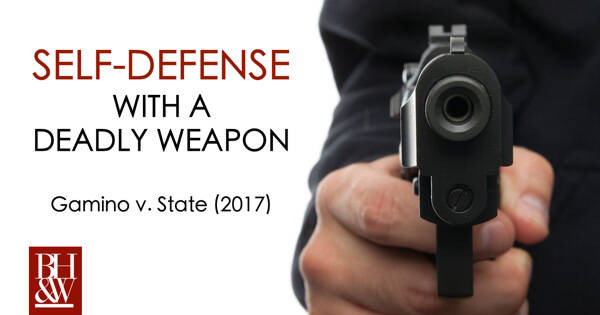
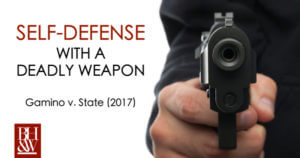 The Court of Criminal Appeals recently released an opinion regarding when a defendant is entitled to a self-defense charge. The issue facing the Court was whether there was some evidence, from any source, that would support the elements of self-defense and whether self-defense was authorized when a deadly weapon was used in response to verbal provocation.
The Court of Criminal Appeals recently released an opinion regarding when a defendant is entitled to a self-defense charge. The issue facing the Court was whether there was some evidence, from any source, that would support the elements of self-defense and whether self-defense was authorized when a deadly weapon was used in response to verbal provocation.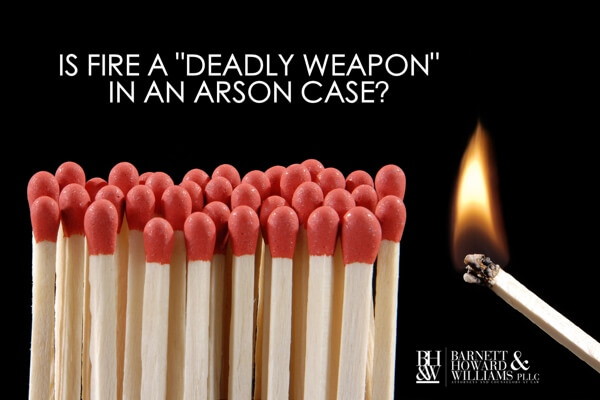
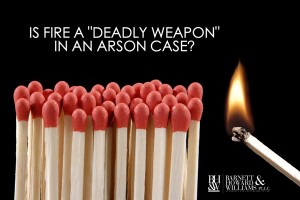 Jeffery Pruett inherited a one-third shared interest in the family home with his two siblings after the death of their elderly parents. The adult siblings had a long history of quarreling over Pruett’s living arrangements, as he moved in and out of the residence prior to the deaths of their parents. Fed up, Pruett moved into a motor home, and was often seen by the neighbors driving around the neighborhood. Meanwhile, Pruett’s siblings listed the home for sale with the intention of dividing the proceeds equally between the three siblings.
Jeffery Pruett inherited a one-third shared interest in the family home with his two siblings after the death of their elderly parents. The adult siblings had a long history of quarreling over Pruett’s living arrangements, as he moved in and out of the residence prior to the deaths of their parents. Fed up, Pruett moved into a motor home, and was often seen by the neighbors driving around the neighborhood. Meanwhile, Pruett’s siblings listed the home for sale with the intention of dividing the proceeds equally between the three siblings.
 In the wake of the recent rise in gun violence, Apple made a big announcement last week that the
In the wake of the recent rise in gun violence, Apple made a big announcement last week that the 
 The Federal Fifth Circuit Court of Appeals thinks so. See the Court’s opinion in
The Federal Fifth Circuit Court of Appeals thinks so. See the Court’s opinion in 
 In
In 
 The “deadly weapon finding” under Texas criminal law is an issue that leads most criminal defense lawyers to bang their collective heads against the courthouse wall. It seems that just about anything and everything is, has been, or will soon be, designated as a “deadly weapon” when the prosecution deems it helpful to securing a conviction and lengthier sentence. Here are some deadly weapons that we’ve seen recently: car, fist, baseball bat, walking stick, STDs, fire, fake gun, etc.
The “deadly weapon finding” under Texas criminal law is an issue that leads most criminal defense lawyers to bang their collective heads against the courthouse wall. It seems that just about anything and everything is, has been, or will soon be, designated as a “deadly weapon” when the prosecution deems it helpful to securing a conviction and lengthier sentence. Here are some deadly weapons that we’ve seen recently: car, fist, baseball bat, walking stick, STDs, fire, fake gun, etc.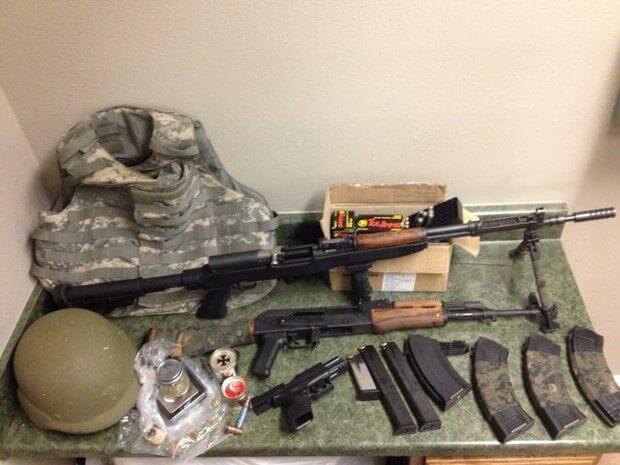
 Below is a case update from the 5th Circuit (Federal)
Below is a case update from the 5th Circuit (Federal) Faced with the question of whether Reckless Driving is a lesser-included offense of Aggravated Assault With a Motor Vehicle (alleged as a Deadly Weapon), the Texas Court of Criminal Appeals explained that there are, indeed, many ways in which a vehicle can be used as a deadly weapon apart from the vehicle being driven, to wit:
Faced with the question of whether Reckless Driving is a lesser-included offense of Aggravated Assault With a Motor Vehicle (alleged as a Deadly Weapon), the Texas Court of Criminal Appeals explained that there are, indeed, many ways in which a vehicle can be used as a deadly weapon apart from the vehicle being driven, to wit:





